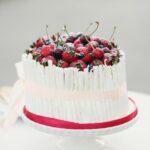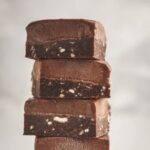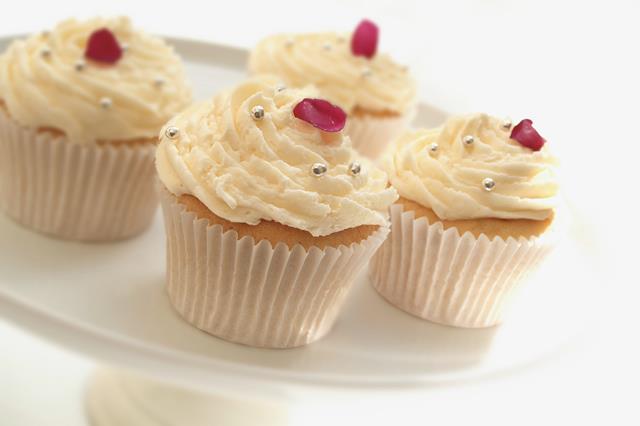What is the best type of icing for cake decorating? Choosing the right icing can make all the difference in the appearance, flavor, and overall outcome of your cake. With various options available, it’s important to understand the different types of icing and their best uses for cake decorating.
In this article, we will explore the various types of icing, including buttercream, royal icing, fondant, ganache, cream cheese frosting, and whipped cream. Each type has its own unique qualities and is best suited for different decorating techniques and purposes.
When it comes to cake decorating, buttercream icing is a popular choice due to its creamy texture and versatility. Royal icing offers a classic option for intricate designs and decorations, while fondant provides a smooth and professional look that is perfect for special occasions.
Ganache offers a rich and glossy finish, ideal for creating a luxurious appearance on cakes. Cream cheese frosting brings a tangy and decadent flavor to cakes, while whipped cream provides a light and airy option for a more delicate decoration.
Understanding the different types of icing available for cake decorating will help you choose the best option based on your desired outcome and specific decorating needs. Whether you’re looking to create intricate designs or achieve a smooth professional finish, selecting the right icing is essential in bringing your cake decorating vision to life.
Buttercream Icing
When it comes to cake decorating, choosing the right type of icing is crucial in achieving the desired look and taste. Buttercream icing is one of the most popular choices due to its creamy texture and versatility in decorating cakes. This type of icing can be easily tinted with food coloring, making it ideal for creating vibrant designs and patterns on cakes. Additionally, buttercream can be easily piped into various shapes and forms, allowing for intricate detailing on cakes.
One of the main advantages of using buttercream icing for cake decoration is its delicious flavor. The creamy texture combined with the rich taste of butter makes it a favorite choice for many cake enthusiasts. Whether used as a filling, frosting, or decorative element, buttercream adds a sumptuous flavor to any cake. It also pairs well with different cake flavors such as vanilla, chocolate, or red velvet, making it a versatile option for various types of cakes.
Another benefit of using buttercream icing for cake decorating is its ability to create smooth and sleek finishes on cakes. With proper technique and tools, buttercream can be applied in thin layers to achieve a flawless surface on cakes. This makes it an excellent choice for both simple and elaborate cake designs. Whether covering a wedding cake with intricate floral patterns or simply frosting a birthday cake with colorful swirls, buttercream offers endless possibilities for creativity in cake decoration.
| Advantages | Buttercream Icing |
|---|---|
| Versatility | Can be easily tinted and piped into various shapes |
| Flavor | Delicious taste that complements different cake flavors |
| Smooth Finish | Can create flawless surfaces on cakes when applied properly |
Royal Icing
One of the advantages of royal icing is its versatility when it comes to decorating techniques. It can be easily colored with food coloring to create vibrant designs, or left plain for a classic white finish. Additionally, royal icing can be thinned down with water to create a perfect consistency for flooding or covering large areas of the cake.
When working with royal icing, it’s important to have the right tools at hand. Piping bags with various tips are essential for creating different designs and textures on the cake. Additionally, using stencils and edible markers can help achieve precise patterns and outlines with royal icing.
If you’re looking to create ornate and intricate designs on your cakes, royal icing is the best type of icing for cake decorating. Its ability to dry hard makes it an ideal choice for detailed decorations that need to hold their shape without losing any definition during the decorating process.
- Delicate lace patterns
- Intricate piping work
- Detailed embellishments
- Vibrant designs achieved with food coloring
- Classic white finish
- Thinning down with water for flooding
- Piping bags with various tips
- Stencils and edible markers
Fondant
One of the key advantages of fondant is its ability to provide a clean canvas for intricate designs and decorations. Whether you’re looking to create geometric patterns, elegant floral motifs, or 3D figurines, fondant allows decorators to achieve precision and detail that may be challenging with other types of icing. Its flexibility also makes it an ideal choice for creating texture on cakes, such as ruffles, pleats, or quilted patterns.
In addition to its aesthetic appeal, fondant also offers practical benefits in terms of shelf life and stability. Cakes covered with fondant have a longer lifespan compared to those decorated with buttercream or whipped cream. The smooth surface created by fondant also helps seal in moisture, keeping the cake fresh for a longer period of time.
When properly stored in a cool, dry place, fondant-covered cakes can maintain their appearance and taste for several days after being decorated. Overall, fondant’s ability to provide both a visually stunning finish and extended freshness makes it a top choice for professional cake decorators and home bakers alike when considering what is the best type of icing for cake decorating.
Ganache
One of the key advantages of using ganache for cake decorating is its versatility. It can be poured over the cake for a sleek and seamless finish, used to create intricate designs, or even whipped into a light and airy frosting. Additionally, ganache can be easily flavored with different extracts or liqueurs to add depth and complexity to the icing.
When working with ganache, it is important to consider the ratio of chocolate to cream in order to achieve the desired consistency. A higher proportion of cream will result in a thinner ganache which is perfect for pouring over cakes, while more chocolate will yield a thicker ganache that can be used for piping intricate patterns or creating textured finishes. Here are some tips for working with ganache:
- Use high-quality chocolate for best results
- Heat the cream until just below boiling before adding it to chopped chocolate
- Allow the ganache to set at room temperature before using it for decorating
Overall, when considering what is the best type of icing for cake decorating, ganache offers a sophisticated and polished option that is sure to impress. Whether you are looking to create a show-stopping wedding cake or add an elegant touch to a simple dessert, ganache provides endless possibilities for stunning cake decoration.
Cream Cheese Frosting
Best Applications
Cream cheese frosting is best suited for cakes with strong flavors that can stand up to its tangy richness. It pairs exceptionally well with moist and dense cakes like carrot or hummingbird cake. The smooth texture of cream cheese frosting also makes it ideal for creating decorative swirls or peaks on top of cupcakes or layer cakes.
Decorating Tips
When using cream cheese frosting for cake decorating, it’s important to ensure that the cake layers are completely cooled before applying the icing to prevent it from melting or becoming runny. Additionally, you can enhance the flavor profile of the frosting by adding citrus zest or spices like cinnamon or nutmeg. To achieve a smooth finish on your cake, consider chilling the frosted cake in the refrigerator for a short time before adding any additional decorations.
Storage Guidelines
Because cream cheese frosting contains perishable ingredients, it must be stored in the refrigerator if not used immediately. When refrigerated in an airtight container, cream cheese frosting can last for up to one week. Before using leftover cream cheese frosting, allow it to come to room temperature and then beat it briefly with a mixer to restore its creamy consistency.
Whipped Cream
Advantages of Using Whipped Cream
One of the main advantages of using whipped cream as an icing for cake decorating is its lightness. Whipped cream adds a delicate and airy texture to cakes, making it ideal for those who prefer a less dense or heavy dessert. It also complements the flavor of many different types of cakes, allowing the natural taste of the cake to shine through without overwhelming it with sweetness or richness.
Another advantage of whipped cream is its versatility. This type of icing can be easily colored with food coloring or flavored with various extracts to complement the flavor profile of the cake. Additionally, whipped cream can be piped into different designs and shapes, making it suitable for creating decorative borders, rosettes, or other intricate details on a cake.
Cautions When Using Whipped Cream
While whipped cream can be a great option for cake decorating, there are some cautions to consider when using it. Whipped cream is best used on cakes that will be served immediately or refrigerated shortly after decorating, as it does not hold up well at room temperature.
It also does not withstand heat very well, so it may not be suitable for outdoor events or warm environments where the icing could melt. Additionally, because whipped cream contains dairy, it should be stored in the refrigerator until ready to serve to avoid spoilage.
Conclusion
In conclusion, when it comes to choosing the best type of icing for cake decorating, there are several options to consider, each with its own unique qualities and best uses. Buttercream icing is a popular choice due to its creamy texture and versatility, making it suitable for various decorating techniques.
Royal icing, on the other hand, is ideal for intricate designs and decorations, as it hardens to a smooth finish that is perfect for detailed work. Fondant offers a professional look with its smooth surface, making it great for creating elegant and decorative cakes.
Ganache provides a rich and glossy option for cake decoration, adding a luxurious touch to any dessert. Cream cheese frosting is favored for its tangy and decadent flavor, making it perfect for carrot or red velvet cakes. Lastly, whipped cream offers a light and airy option for those looking for a more delicate touch in their cake decorating.
Ultimately, the best type of icing for cake decorating will depend on the desired outcome and personal preferences. Whether you’re aiming for intricate designs, smooth finishes, rich flavors, or delicate touches, there is an icing option that will suit your needs.
Experimenting with different types of icing can also be a fun way to explore new techniques and elevate your cake decorating skills. So next time you’re preparing to decorate a cake, consider the different types of icing and choose the one that best fits your vision for the perfect dessert.
Frequently Asked Questions
What Is Best Icing to Decorate a Cake?
The best icing to decorate a cake really depends on personal preference and the desired outcome. Buttercream icing is popular due to its smooth texture and ability to hold its shape when piped.
What Kind of Icing Do Professionals Use?
Professionals often use Swiss meringue buttercream or fondant for cake decorating. Swiss meringue buttercream is smooth, stable, and can be easily manipulated for intricate designs. Fondant provides a flawless finish and is great for sculpting.
What Is the Best Icing to Practice Cake Decorating?
For practicing cake decorating, it’s best to use a forgiving icing like American buttercream or cream cheese frosting. These icings are easy to work with, forgiving of mistakes, and can be used for various techniques without being too delicate or complicated.

Welcome to my blog about home and family. This blog is a place where I will share my thoughts, ideas, and experiences related to these important topics. I am a stay-at-home mom with two young children. I hope you enjoy reading it! and may find some helpful tips and ideas that will make your home and family life even better!





